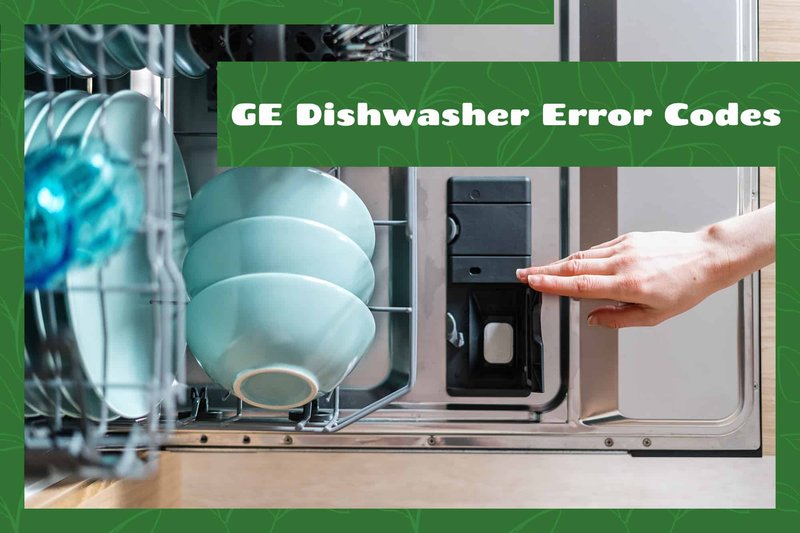
When your GE dishwasher flashes an error code, it’s like a red flag waving to get your attention. The OE code can seem like a mysterious message from the dishwasher underworld, but it’s actually a signal from the machine telling you something specific about what’s going wrong. It’s like when your car’s ‘check engine’ light comes on— not a complete disaster, but definitely something worth investigating. Here, we’ll take you on a journey through what this code means, whether it’s safe to keep using your machine, and what you can do about it.
Understanding the OE Error Code
The OE error code in your GE dishwasher stands for “Overfill Error.” This means that the dishwasher’s internal system has detected more water than it’s supposed to handle. Picture a bathtub filling up and starting to overflow—that’s the kind of situation the dishwasher is trying to avoid. The system uses sensors to monitor water levels, and if something’s off, the OE code pops up.
You might be thinking, “How does too much water even get in there?” Well, there are a few potential culprits. A common one is a malfunctioning water inlet valve—imagine this like a faucet that won’t fully close, letting a drip turn into a flood. Another possibility is that the float switch, which acts like a gatekeeper monitoring water levels, is stuck or faulty. There could even be a clog in the drainage system, leading to water backing up where it shouldn’t be.
When you encounter the OE code, the dishwasher is effectively putting itself on pause to prevent any potential flooding or damage to your kitchen. It’s a safety feature, like when your smoke detector goes off to prevent a fire from spreading. So, while the machine isn’t in any immediate danger of bursting into flames, it’s using caution to protect your home from water damage.
Is It Safe to Continue Using the Dishwasher?
You’re probably wondering if it’s okay to keep using the dishwasher when the OE code appears. In short, it’s best not to. Continuing to use the dishwasher without addressing the error can lead to more serious issues. Think of it like driving a car with a flat tire—not immediately catastrophic, but definitely not ideal and potentially damaging in the long run.
Ignoring the OE code could mean risking water damage to your kitchen, as excess water might spill out. Besides, consistently running a machine in error mode could strain its components, reducing the dishwasher’s lifespan. It’s like running a marathon with a sprained ankle—not only painful but also potentially damaging.
Instead of continuing use, focus on diagnosing and fixing the issue. Start by checking the water inlet valve to see if it’s stuck open. While this might sound technical, think of it as checking to see if a door is stuck open when it should close. If you’re not comfortable doing this yourself, it might be worthwhile to call an appliance repair professional who can safely and effectively address the problem.
Steps to Troubleshoot and Resolve the OE Error
So, what can you do to tackle the OE code? First, ensure the dishwasher is turned off and unplugged before you start any inspection—safety first! Begin by inspecting the water inlet valve. If it looks like it’s malfunctioning, consider getting it replaced. Sometimes, just removing and cleaning any mineral buildup can help it close properly again.
Next, check the float switch. If it’s stuck or not moving freely, gently adjust it to see if that resolves the issue. This switch is a crucial sensor in your dishwasher, much like how your phone’s brightness sensor works. If it’s covered in debris or stuck, it might not be able to do its job correctly.
If tinkering isn’t your thing, don’t worry. Calling in a professional can save you a lot of stress and ensure the problem is fully taken care of. They’ll have the tools and expertise to handle any deeper issues that might be causing the OE code to appear.
Preventing Future OE Errors
Prevention is always better than cure, right? To keep the OE code at bay, regular maintenance is key. Think of it like keeping your car regularly serviced to avoid breakdowns. Simple steps like checking for blockages and ensuring the components like the water inlet valve and float switch are clean and functioning can make a big difference.
Additionally, being mindful of what goes into your dishwasher can help. Avoid overloading, as too many dishes can obstruct components and sensors, leading to errors. Ensure no large particles or food debris are left on dishes before loading them in—this can prevent clogs from forming in the system.
Finally, consider scheduling periodic check-ups with a professional. While this might not always seem necessary, it can catch small issues before they become big problems, saving you a headache (and potentially a lot of money) down the line.
With these steps, you can confidently manage and maintain your GE dishwasher, ensuring it runs smoothly and efficiently without the worry of persistent error codes interrupting your kitchen harmony.